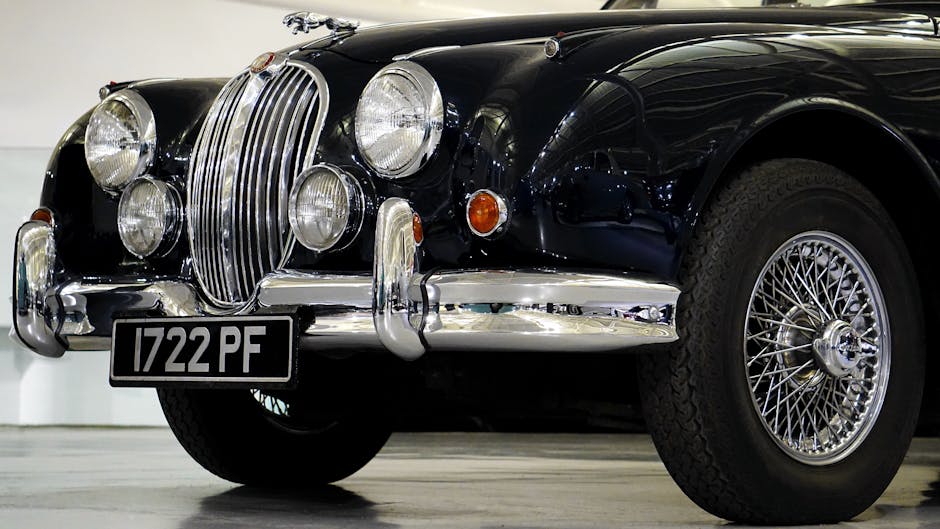How to Remove Rust and Polish Chrome Parts on Classic Cars

Maintaining the chrome parts of classic cars can be a rewarding but challenging task. Over time, these chrome elements are prone to rust and tarnish, detracting from the vehicle's overall aesthetic and value. Fortunately, with the right techniques and tools, you can effectively remove rust and polish chrome parts to restore their original shine.
Understanding the Causes of Rust on Chrome Parts
Rust forms on chrome parts due to prolonged exposure to moisture and oxygen, which causes oxidation. Classic cars are particularly susceptible to this because they often have more exposed metal and may not benefit from modern protective coatings. Additionally, environmental factors like road salt, acid rain, and humidity can accelerate the rusting process.
It's crucial to identify the early signs of rust on your chrome parts. Look for small reddish-brown spots or a dull appearance on the metal surface. Catching rust early can make it easier to remove and prevent further damage.
Using proper maintenance techniques can significantly reduce the risk of rust. Regular cleaning and applying protective wax or sealants can help shield the chrome from moisture and contaminants.
Tools and Materials Needed for Rust Removal
Before starting the rust removal process, gather all necessary tools and materials. This ensures that you can work efficiently without interruption. Here's a list of items you'll need:
- Soft cloths or microfiber towels
- Chrome polish or metal polish
- Aluminum foil or fine steel wool
- Baking soda or vinegar
- Bucket of warm water
- Protective gloves
Each of these items serves a specific purpose in the rust removal process. For instance, aluminum foil is excellent for gently scrubbing away rust without scratching the chrome surface, while baking soda or vinegar acts as a mild abrasive cleaner.
Step-by-Step Guide to Removing Rust from Chrome Parts
The following steps outline an effective method for removing rust from chrome parts on classic cars:
- Preparation: Clean the affected area with warm water and soap to remove any dirt or grime. Dry it thoroughly with a soft cloth.
- Apply Baking Soda Paste: Mix baking soda with water to form a paste. Apply this paste to the rusty areas using a soft cloth or brush. Let it sit for about 10-15 minutes.
- Scrub with Aluminum Foil: Tear off a piece of aluminum foil, dip it in water, and gently scrub the rusty spots. The foil will react with the rust to create a compound that can be easily wiped away.
- Rinse and Dry: Rinse the area with clean water and dry it thoroughly using a microfiber towel.
- Polish: Apply chrome polish or metal polish to the cleaned area using another soft cloth. Buff it in circular motions until you achieve a shiny finish.
| Step | Action | Materials Needed |
|---|---|---|
| 1 | Clean Area | Warm Water, Soap, Soft Cloth |
| 2 | Baking Soda Paste Application | Baking Soda, Water, Brush/Cloth |
| 3 | Scrubbing with Aluminum Foil | Aluminum Foil, Water |
| 4 | Rinse and Dry | Clean Water, Microfiber Towel |
| 5 | Polishing | Chrome Polish/Metal Polish, Soft Cloth |
Caring for Polished Chrome Parts Long-Term
Once you've successfully removed rust and polished your chrome parts, maintaining their condition is key. Regular maintenance not only preserves the shine but also prevents future rust formation.
A few tips for long-term care include:
- Avoid Harsh Chemicals: Use mild soap solutions instead of harsh cleaners that might damage the chrome finish.
- Regular Cleaning: Clean your chrome parts regularly to remove dust, dirt, and other contaminants that could lead to rust formation.
- Protective Coatings: Apply a layer of wax or sealant designed for chrome surfaces. This creates a barrier against moisture and oxidation.
- Covering When Not in Use:: If your classic car is stored outdoors or in a humid environment, consider using a car cover to protect it from elements that contribute to rusting.
A blend of diligent cleaning routines and protective measures can keep your chrome parts looking pristine for years to come. It's worth investing time in these practices as they maintain not just the aesthetic appeal but also the value of your classic car.
By understanding what causes rust, using appropriate tools and techniques for removal, following step-by-step guides, and committing to long-term care practices, you ensure that your vehicle remains in top condition. Each step taken in maintaining these components contributes significantly to preserving automotive history while enjoying the timeless beauty of classic cars.
The feeling of seeing your car's chrome parts gleam after thorough cleaning is truly rewarding. Not only does it enhance your vehicle's appearance, but it also signifies your dedication to preserving its legacy. Whether you're an enthusiast or a casual owner, keeping those chrome elements in prime condition reflects pride in ownership and appreciation for automotive craftsmanship.